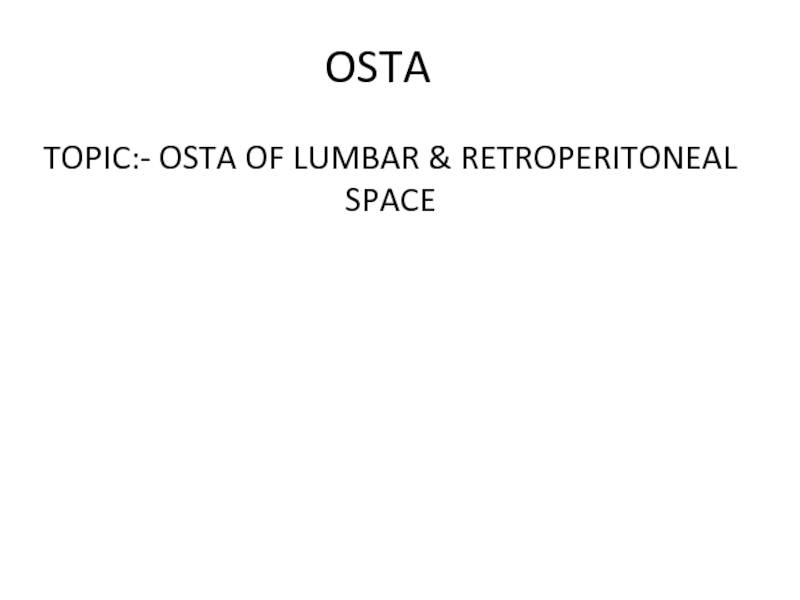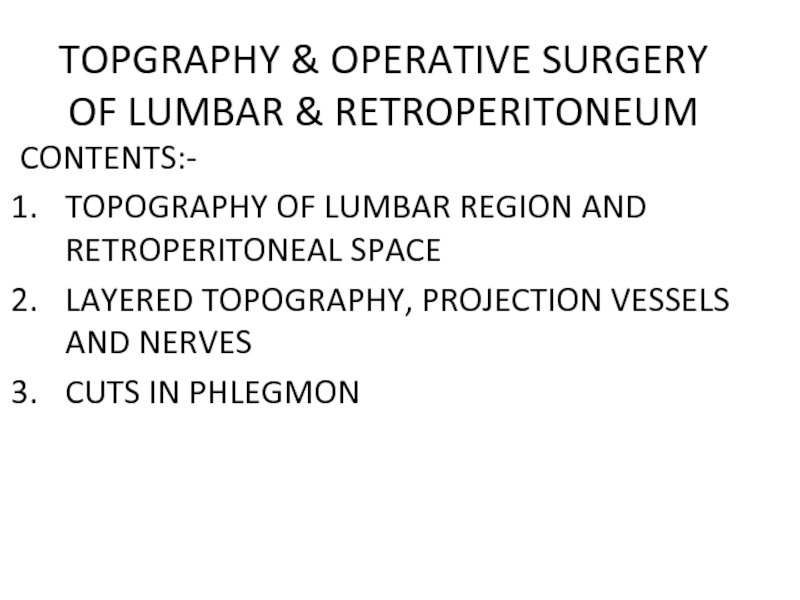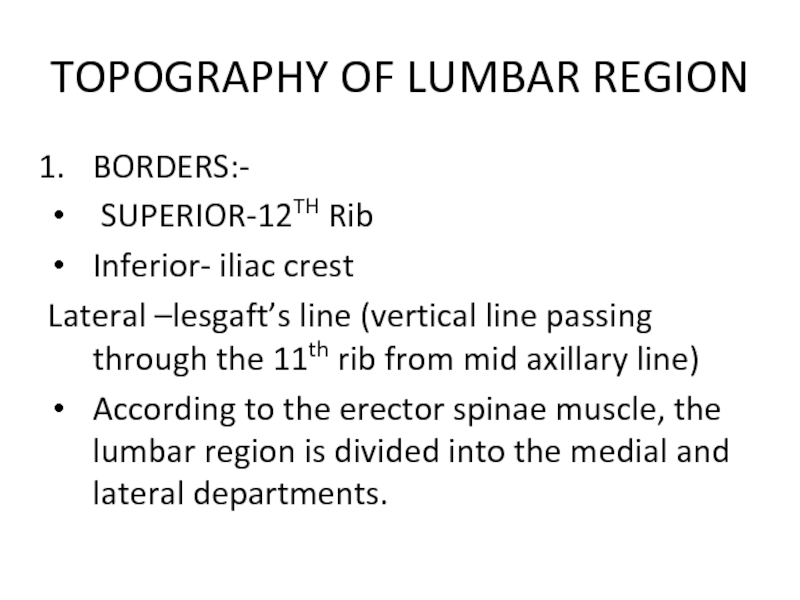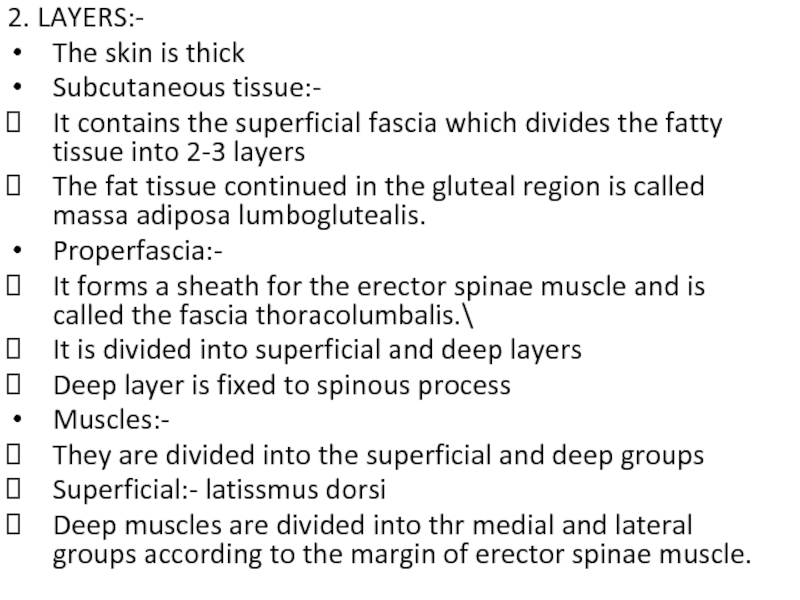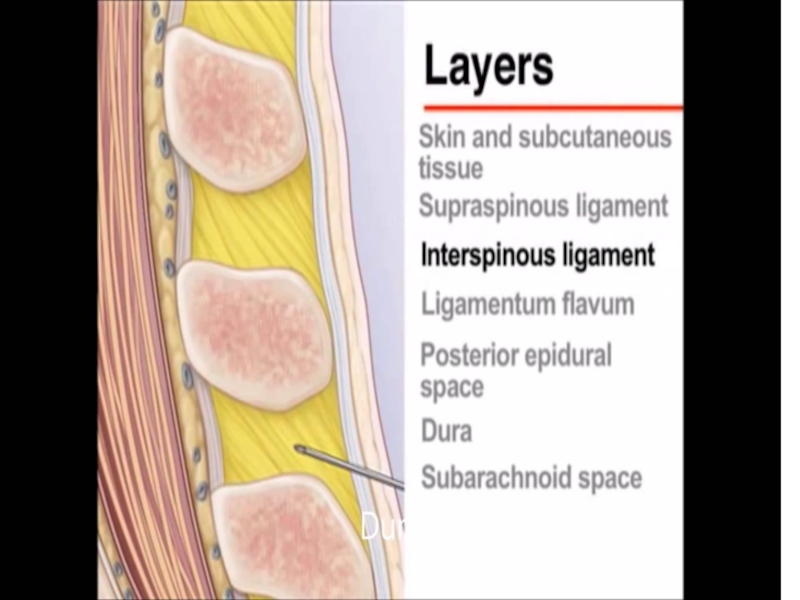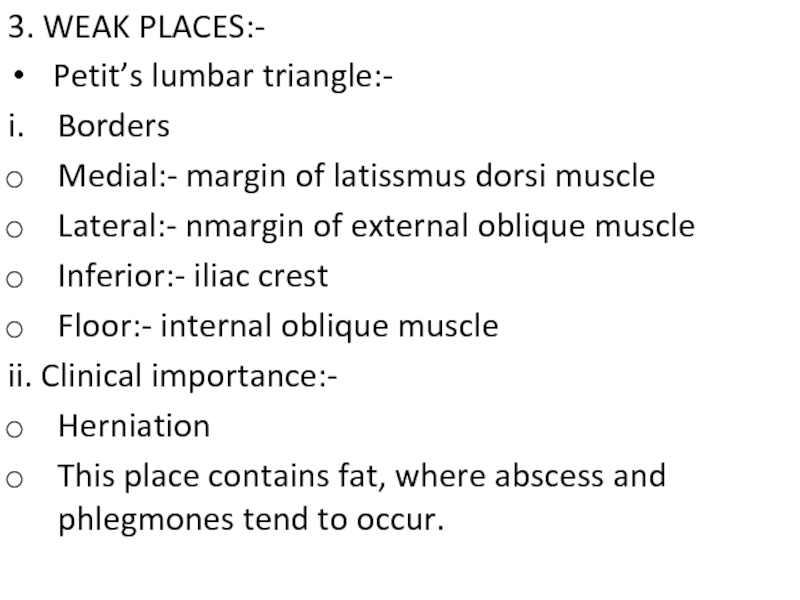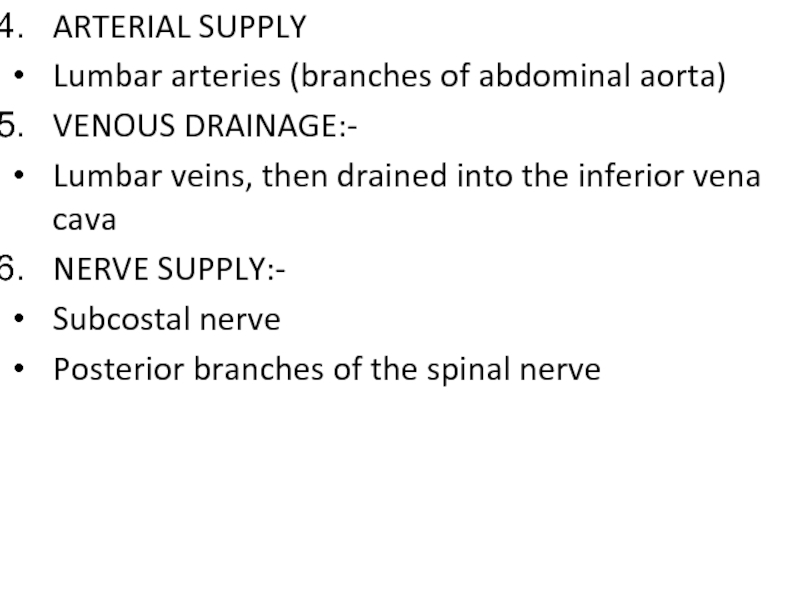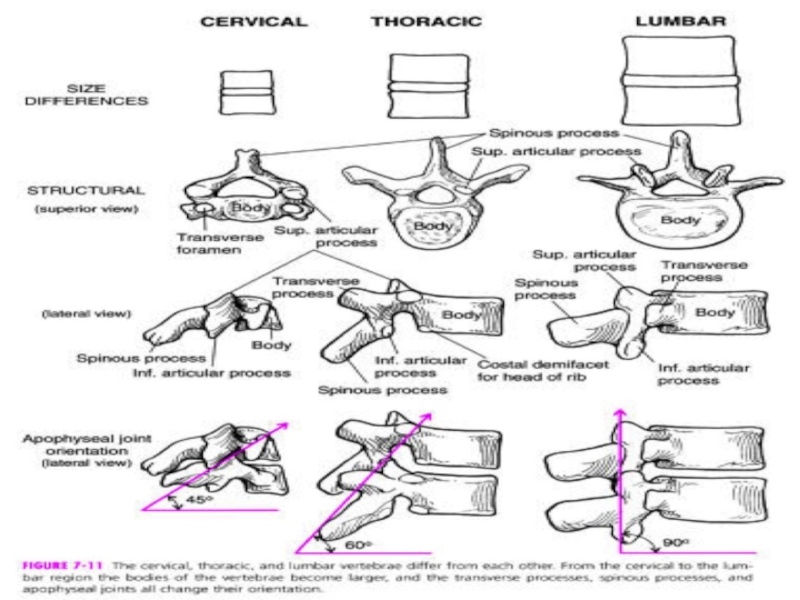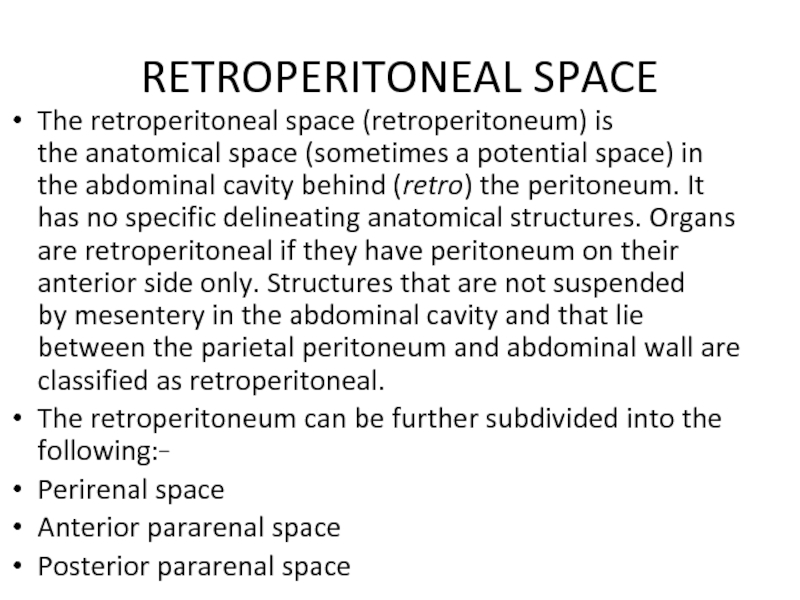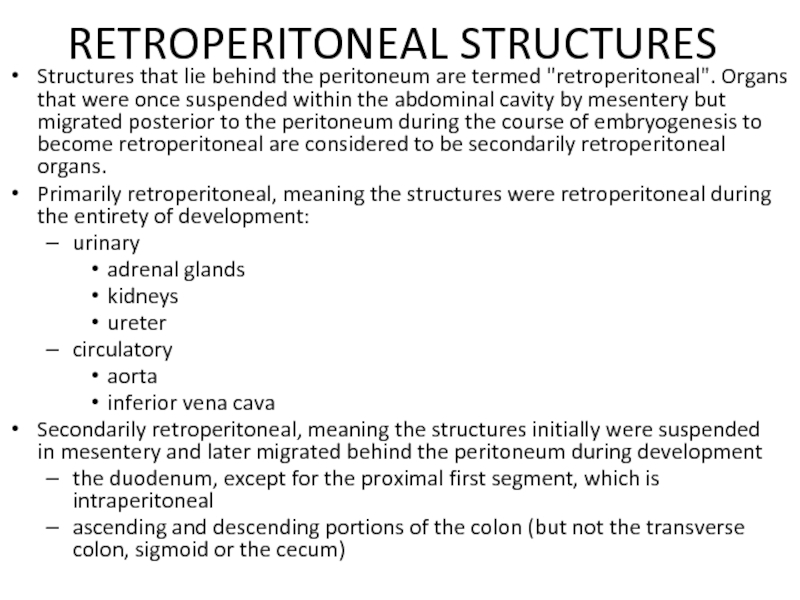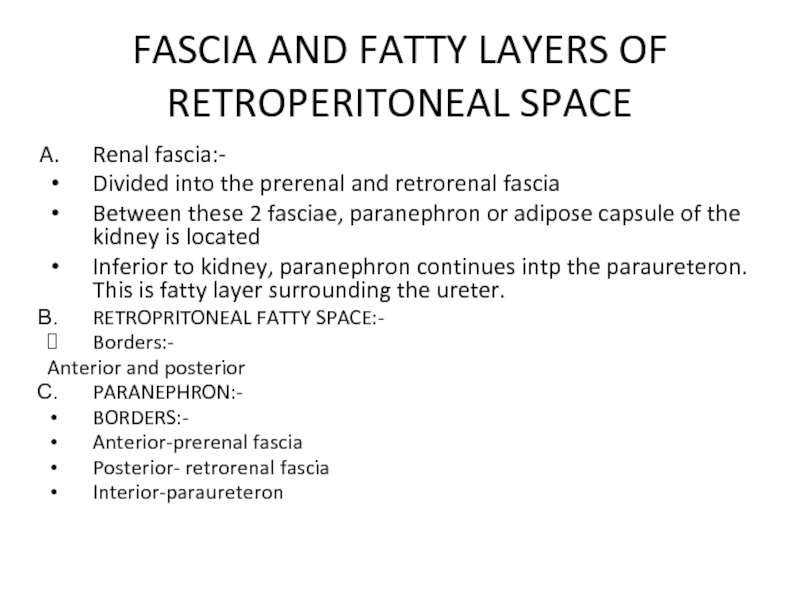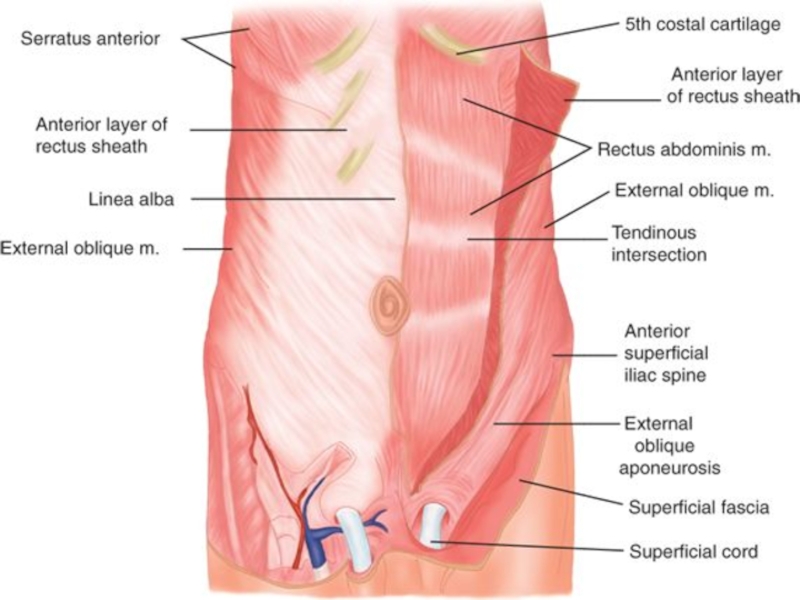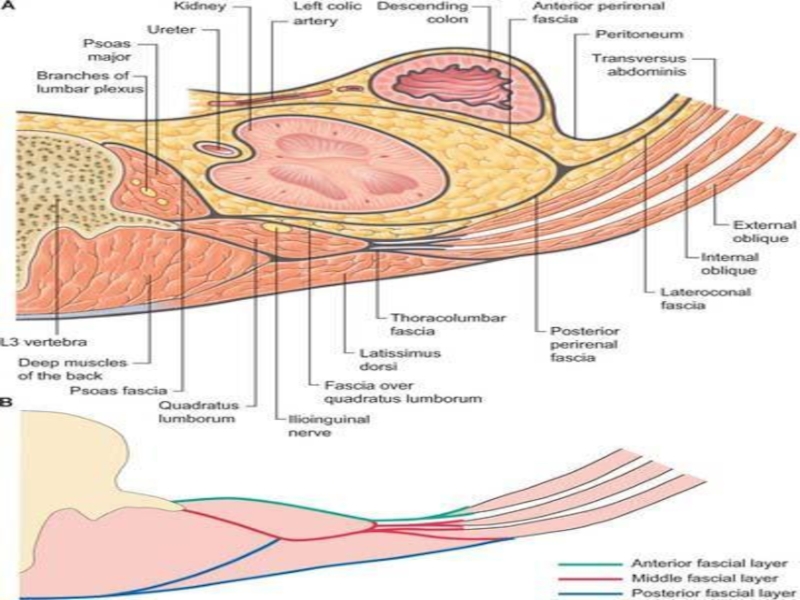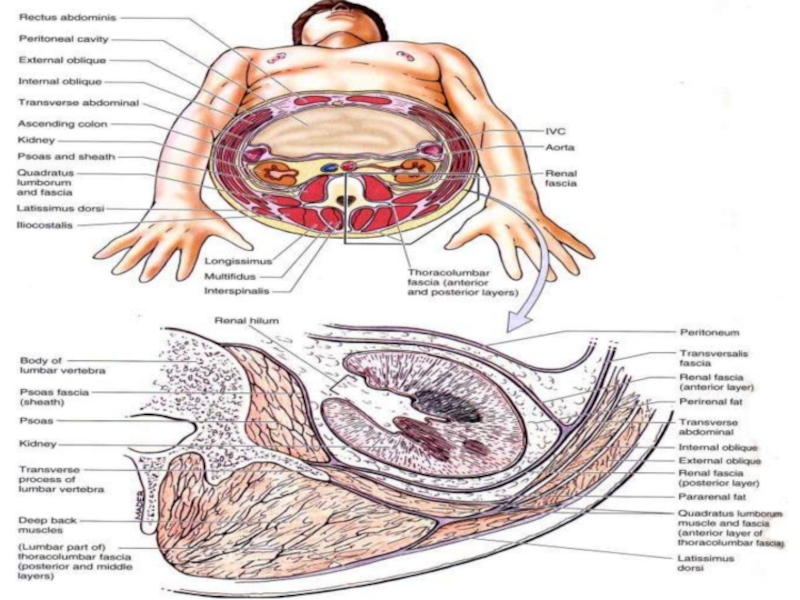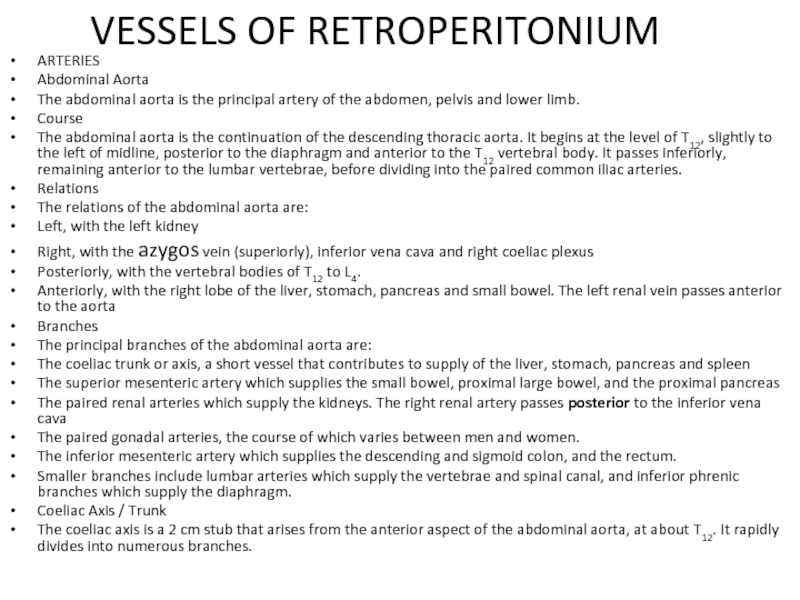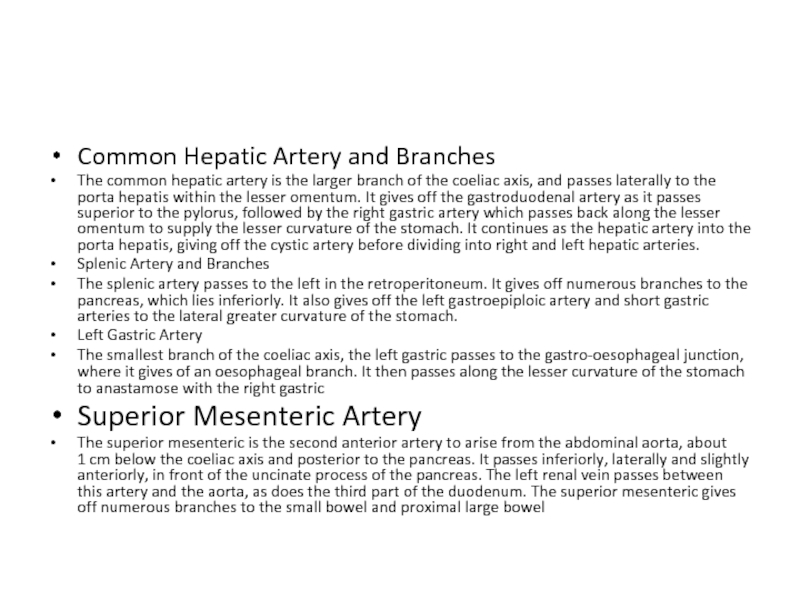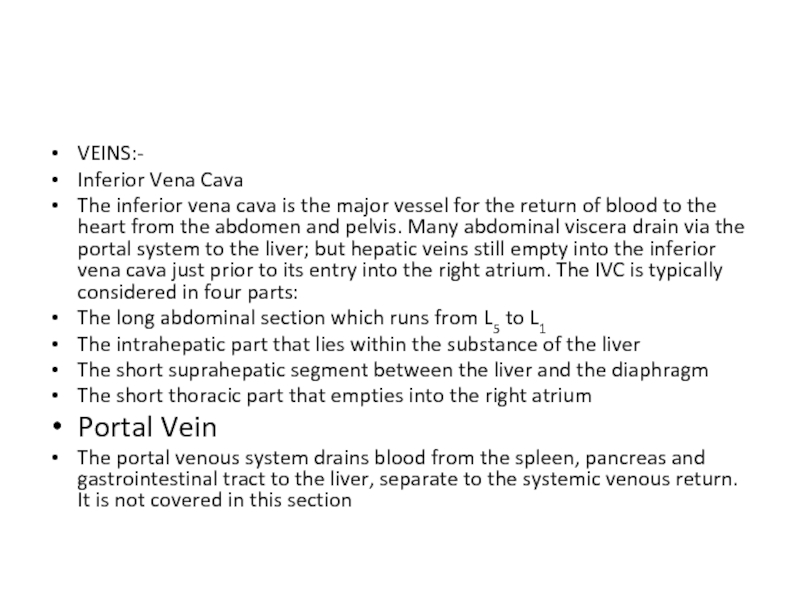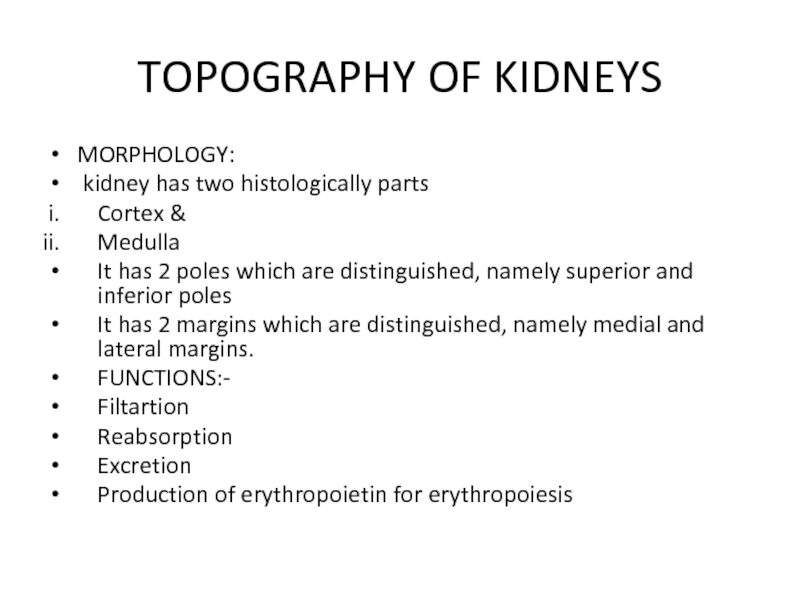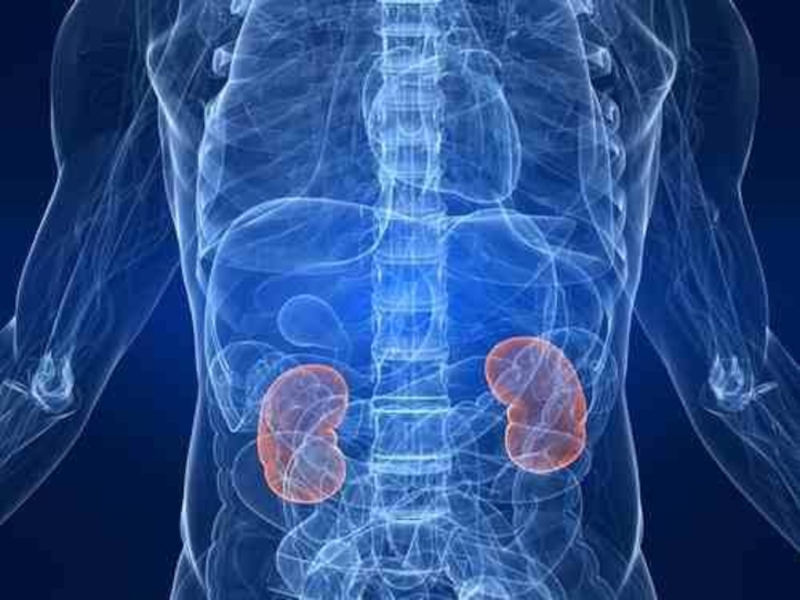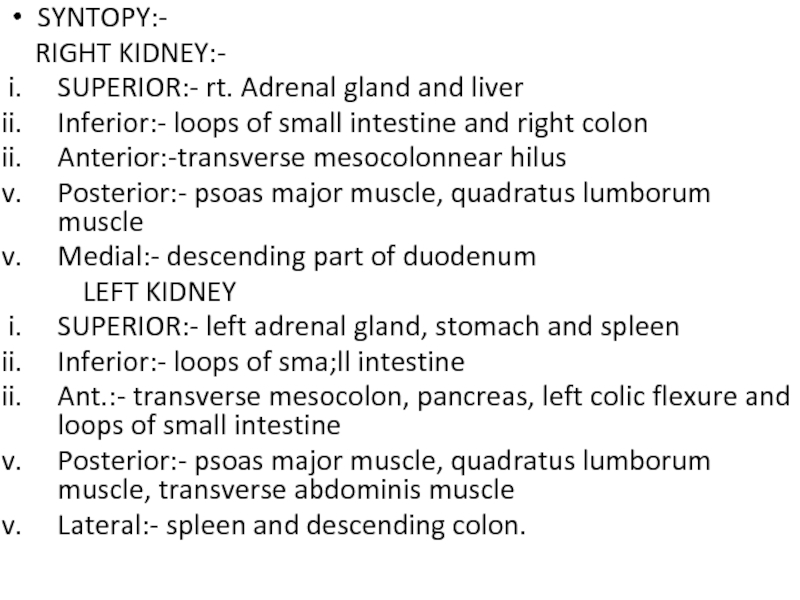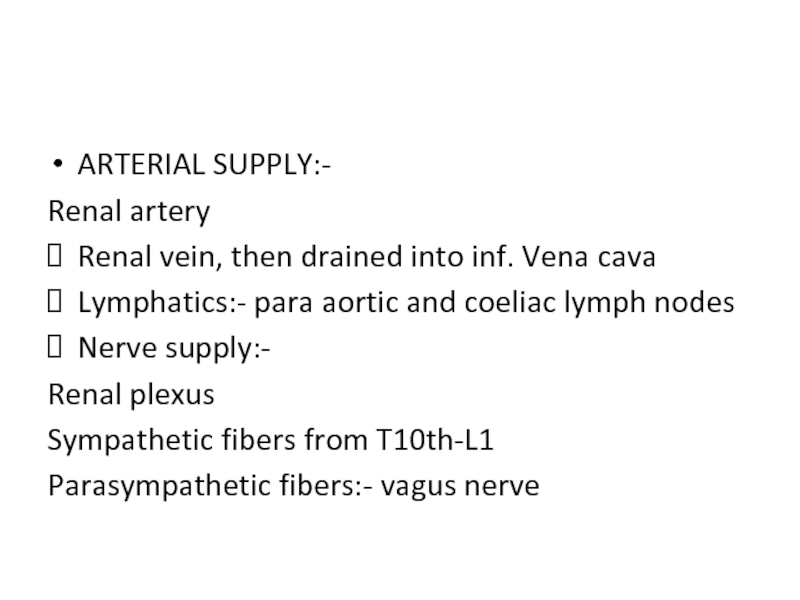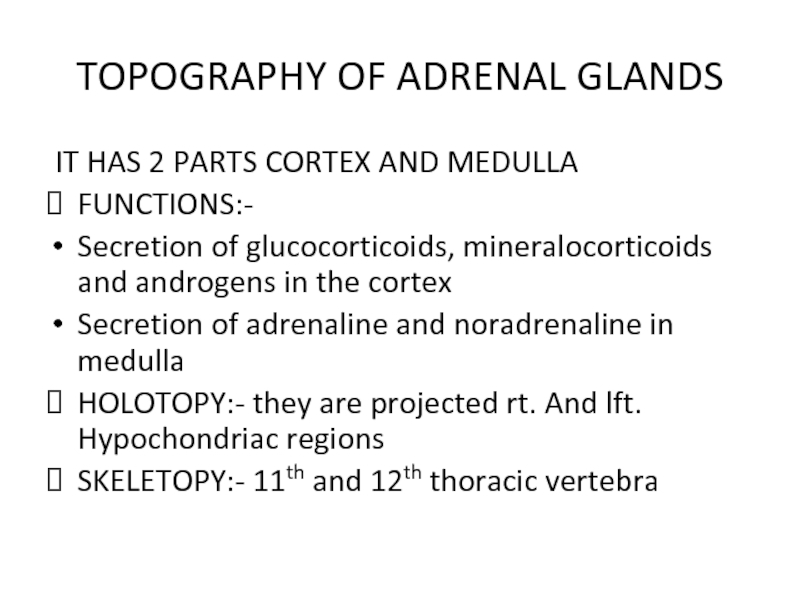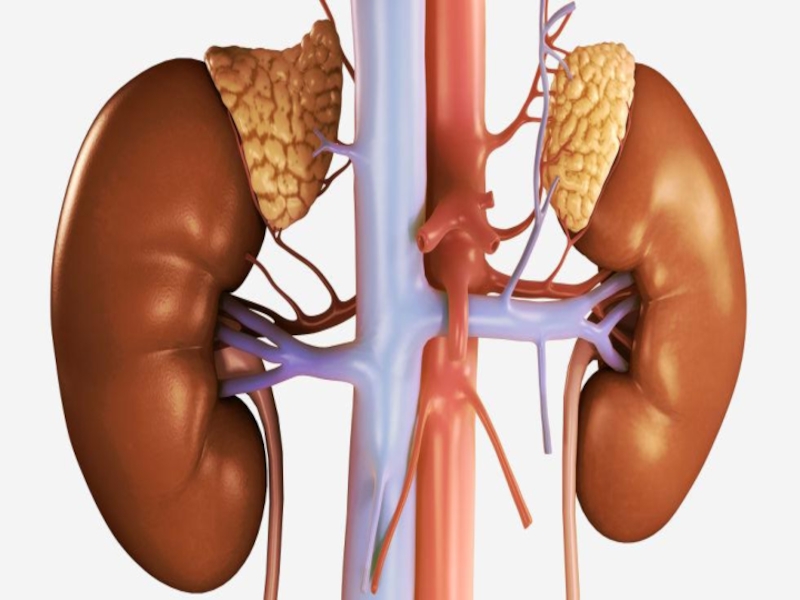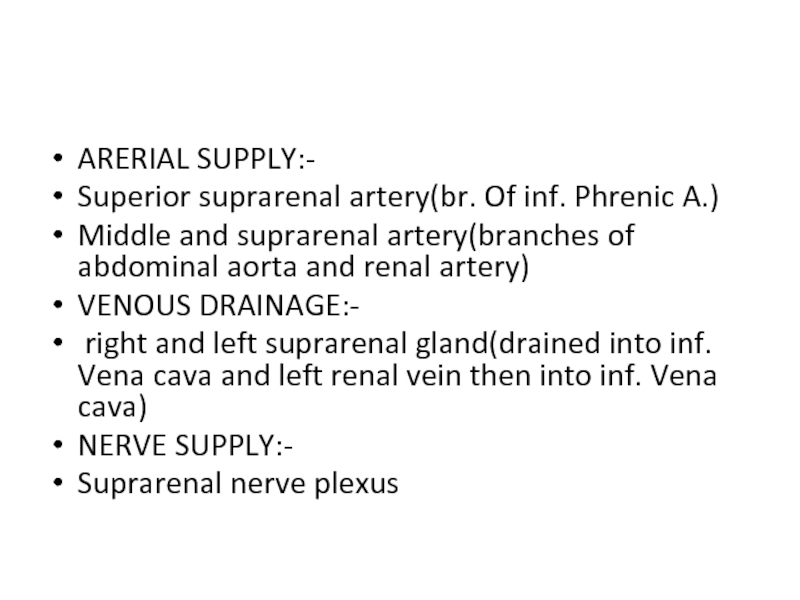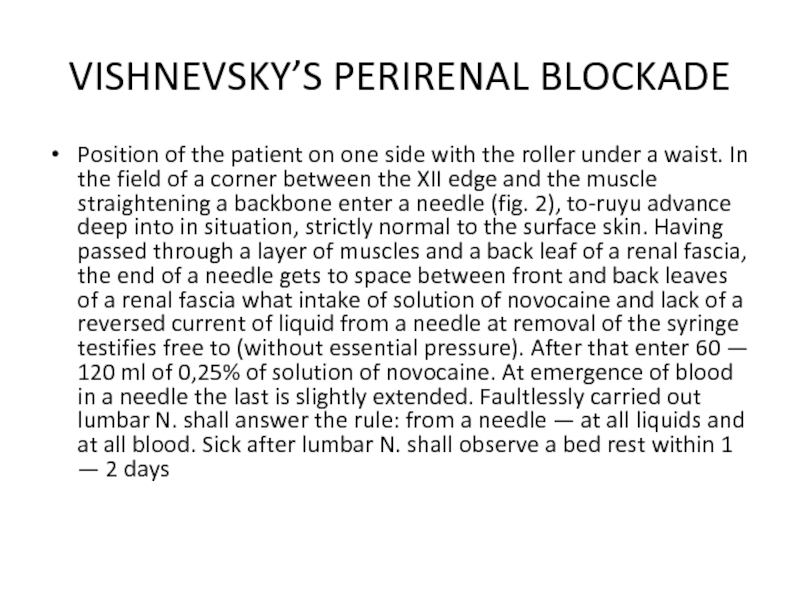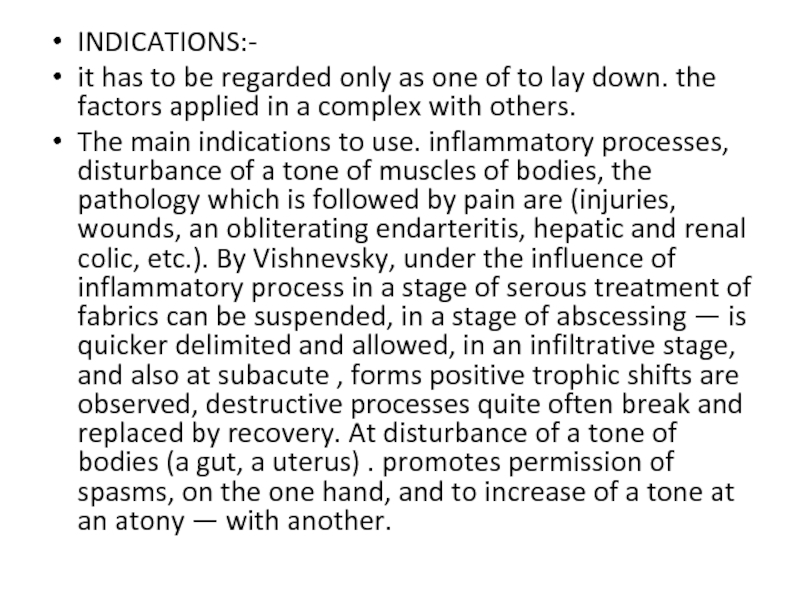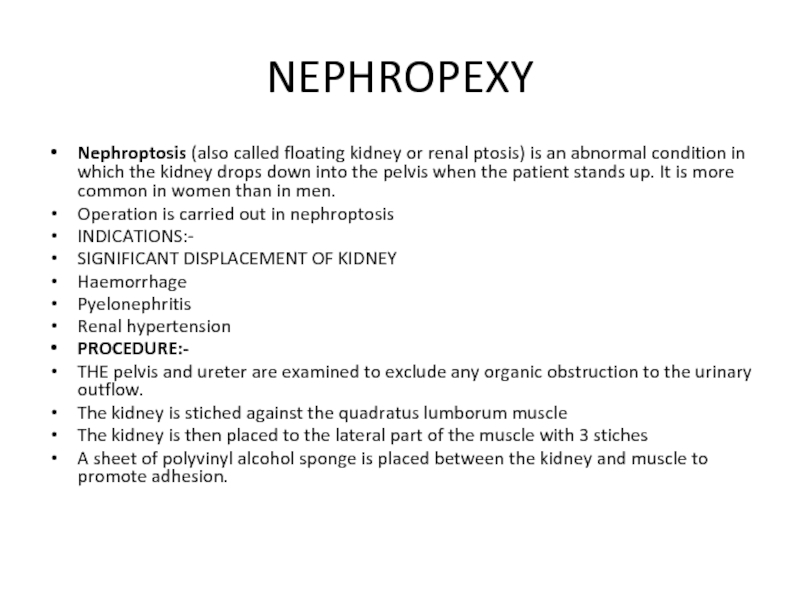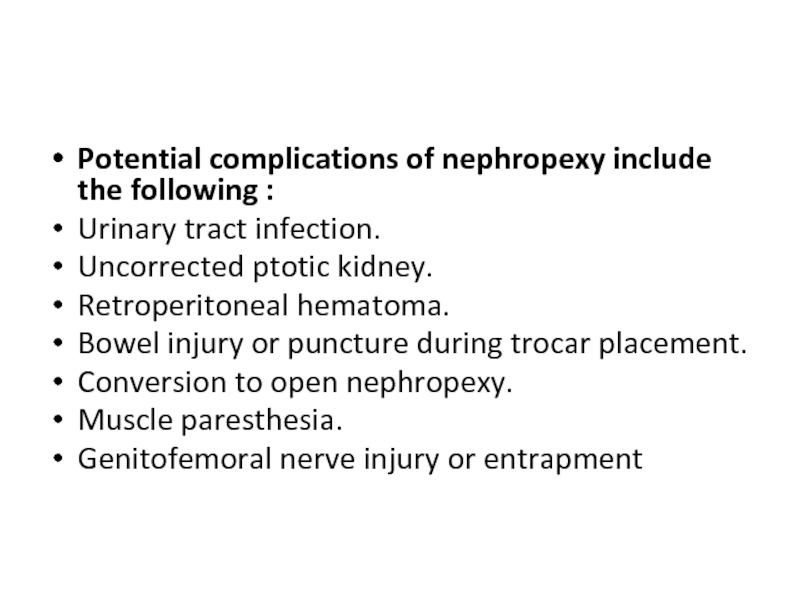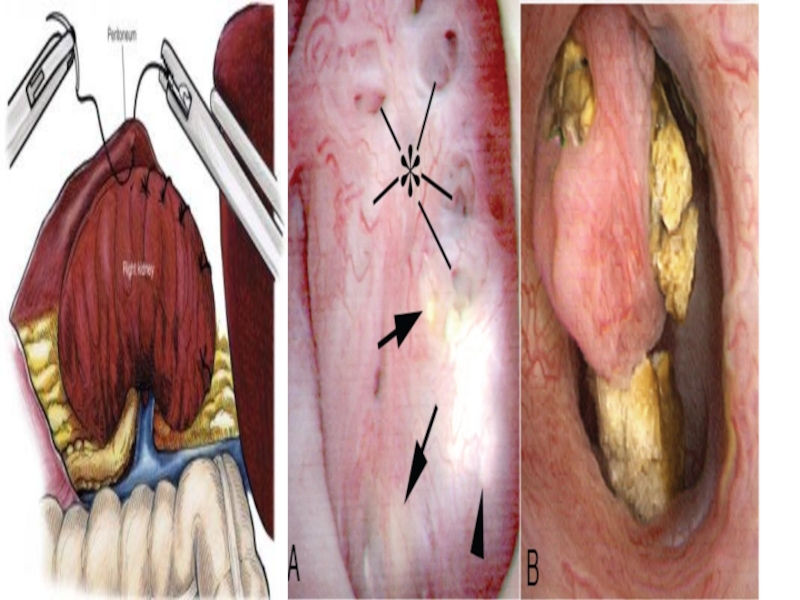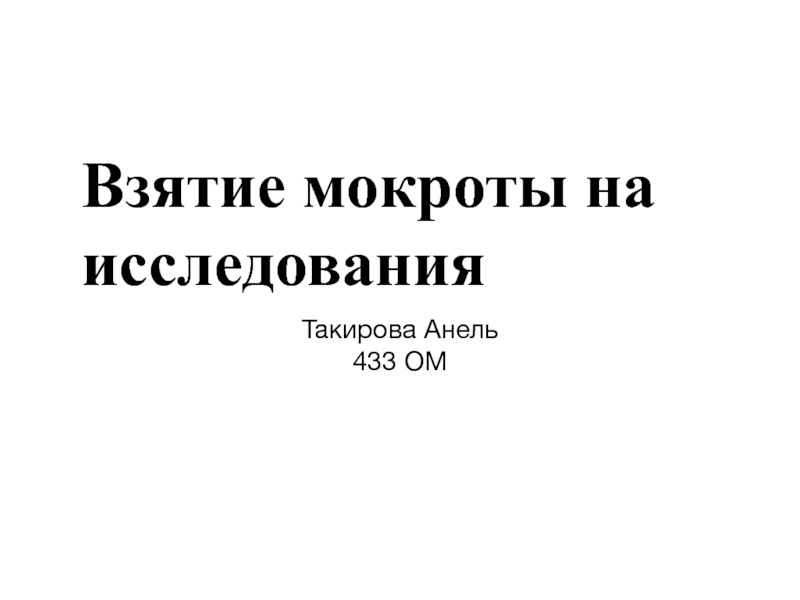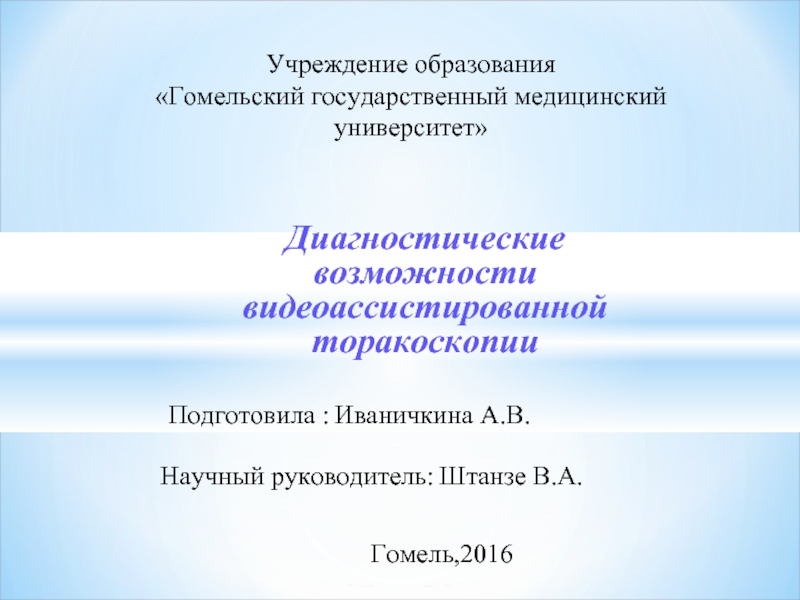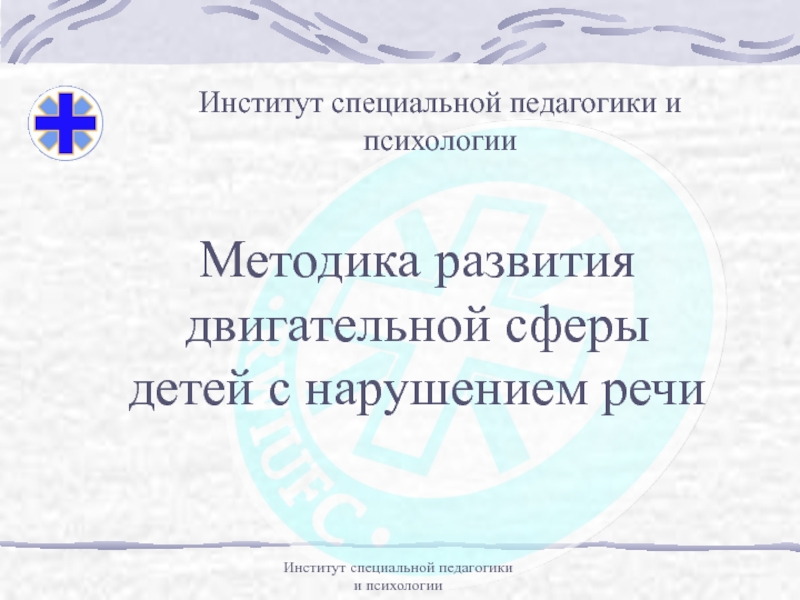- Главная
- Разное
- Дизайн
- Бизнес и предпринимательство
- Аналитика
- Образование
- Развлечения
- Красота и здоровье
- Финансы
- Государство
- Путешествия
- Спорт
- Недвижимость
- Армия
- Графика
- Культурология
- Еда и кулинария
- Лингвистика
- Английский язык
- Астрономия
- Алгебра
- Биология
- География
- Детские презентации
- Информатика
- История
- Литература
- Маркетинг
- Математика
- Медицина
- Менеджмент
- Музыка
- МХК
- Немецкий язык
- ОБЖ
- Обществознание
- Окружающий мир
- Педагогика
- Русский язык
- Технология
- Физика
- Философия
- Химия
- Шаблоны, картинки для презентаций
- Экология
- Экономика
- Юриспруденция
Osta of lumbar & retroperitoneal space презентация
Содержание
- 1. Osta of lumbar & retroperitoneal space
- 2. TOPGRAPHY & OPERATIVE SURGERY OF LUMBAR &
- 3. TOPOGRAPHY OF LUMBAR REGION BORDERS:-
- 4. 2. LAYERS:- The skin is thick Subcutaneous
- 6. 3. WEAK PLACES:- Petit’s lumbar triangle:- Borders
- 7. ARTERIAL SUPPLY Lumbar arteries (branches of abdominal
- 9. RETROPERITONEAL SPACE The retroperitoneal space (retroperitoneum) is the anatomical space (sometimes
- 10. RETROPERITONEAL STRUCTURES Structures that lie behind the peritoneum are
- 11. FASCIA AND FATTY LAYERS OF RETROPERITONEAL SPACE
- 15. VESSELS OF RETROPERITONIUM ARTERIES Abdominal Aorta The
- 16. Common Hepatic Artery and Branches The common
- 17. VEINS:- Inferior Vena Cava The inferior vena
- 18. TOPOGRAPHY OF KIDNEYS MORPHOLOGY: kidney has
- 20. SYNTOPY:- RIGHT KIDNEY:- SUPERIOR:- rt.
- 21. ARTERIAL SUPPLY:- Renal artery Renal vein, then
- 22. TOPOGRAPHY OF ADRENAL GLANDS IT HAS
- 24. ARERIAL SUPPLY:- Superior suprarenal artery(br. Of inf.
- 25. VISHNEVSKY’S PERIRENAL BLOCKADE Position of the patient
- 26. INDICATIONS:- it has to be regarded only
- 27. NEPHROPEXY Nephroptosis (also called floating kidney or renal
- 28. Potential complications of nephropexy include the following
Слайд 2TOPGRAPHY & OPERATIVE SURGERY OF LUMBAR & RETROPERITONEUM
CONTENTS:-
TOPOGRAPHY OF LUMBAR REGION
AND RETROPERITONEAL SPACE
LAYERED TOPOGRAPHY, PROJECTION VESSELS AND NERVES
CUTS IN PHLEGMON
LAYERED TOPOGRAPHY, PROJECTION VESSELS AND NERVES
CUTS IN PHLEGMON
Слайд 3TOPOGRAPHY OF LUMBAR REGION
BORDERS:-
SUPERIOR-12TH Rib
Inferior- iliac crest
Lateral –lesgaft’s line
(vertical line passing through the 11th rib from mid axillary line)
According to the erector spinae muscle, the lumbar region is divided into the medial and lateral departments.
According to the erector spinae muscle, the lumbar region is divided into the medial and lateral departments.
Слайд 42. LAYERS:-
The skin is thick
Subcutaneous tissue:-
It contains the superficial fascia which
divides the fatty tissue into 2-3 layers
The fat tissue continued in the gluteal region is called massa adiposa lumboglutealis.
Properfascia:-
It forms a sheath for the erector spinae muscle and is called the fascia thoracolumbalis.\
It is divided into superficial and deep layers
Deep layer is fixed to spinous process
Muscles:-
They are divided into the superficial and deep groups
Superficial:- latissmus dorsi
Deep muscles are divided into thr medial and lateral groups according to the margin of erector spinae muscle.
The fat tissue continued in the gluteal region is called massa adiposa lumboglutealis.
Properfascia:-
It forms a sheath for the erector spinae muscle and is called the fascia thoracolumbalis.\
It is divided into superficial and deep layers
Deep layer is fixed to spinous process
Muscles:-
They are divided into the superficial and deep groups
Superficial:- latissmus dorsi
Deep muscles are divided into thr medial and lateral groups according to the margin of erector spinae muscle.
Слайд 63. WEAK PLACES:-
Petit’s lumbar triangle:-
Borders
Medial:- margin of latissmus dorsi muscle
Lateral:- nmargin
of external oblique muscle
Inferior:- iliac crest
Floor:- internal oblique muscle
ii. Clinical importance:-
Herniation
This place contains fat, where abscess and phlegmones tend to occur.
Inferior:- iliac crest
Floor:- internal oblique muscle
ii. Clinical importance:-
Herniation
This place contains fat, where abscess and phlegmones tend to occur.
Слайд 7ARTERIAL SUPPLY
Lumbar arteries (branches of abdominal aorta)
VENOUS DRAINAGE:-
Lumbar veins, then drained
into the inferior vena cava
NERVE SUPPLY:-
Subcostal nerve
Posterior branches of the spinal nerve
NERVE SUPPLY:-
Subcostal nerve
Posterior branches of the spinal nerve
Слайд 9RETROPERITONEAL SPACE
The retroperitoneal space (retroperitoneum) is the anatomical space (sometimes a potential space) in the abdominal cavity behind
(retro) the peritoneum. It has no specific delineating anatomical structures. Organs are retroperitoneal if they have peritoneum on their anterior side only. Structures that are not suspended by mesentery in the abdominal cavity and that lie between the parietal peritoneum and abdominal wall are classified as retroperitoneal.
The retroperitoneum can be further subdivided into the following:_
Perirenal space
Anterior pararenal space
Posterior pararenal space
The retroperitoneum can be further subdivided into the following:_
Perirenal space
Anterior pararenal space
Posterior pararenal space
Слайд 10RETROPERITONEAL STRUCTURES
Structures that lie behind the peritoneum are termed "retroperitoneal". Organs that were
once suspended within the abdominal cavity by mesentery but migrated posterior to the peritoneum during the course of embryogenesis to become retroperitoneal are considered to be secondarily retroperitoneal organs.
Primarily retroperitoneal, meaning the structures were retroperitoneal during the entirety of development:
urinary
adrenal glands
kidneys
ureter
circulatory
aorta
inferior vena cava
Secondarily retroperitoneal, meaning the structures initially were suspended in mesentery and later migrated behind the peritoneum during development
the duodenum, except for the proximal first segment, which is intraperitoneal
ascending and descending portions of the colon (but not the transverse colon, sigmoid or the cecum)
Primarily retroperitoneal, meaning the structures were retroperitoneal during the entirety of development:
urinary
adrenal glands
kidneys
ureter
circulatory
aorta
inferior vena cava
Secondarily retroperitoneal, meaning the structures initially were suspended in mesentery and later migrated behind the peritoneum during development
the duodenum, except for the proximal first segment, which is intraperitoneal
ascending and descending portions of the colon (but not the transverse colon, sigmoid or the cecum)
Слайд 11FASCIA AND FATTY LAYERS OF RETROPERITONEAL SPACE
Renal fascia:-
Divided into the prerenal
and retrorenal fascia
Between these 2 fasciae, paranephron or adipose capsule of the kidney is located
Inferior to kidney, paranephron continues intp the paraureteron. This is fatty layer surrounding the ureter.
RETROPRITONEAL FATTY SPACE:-
Borders:-
Anterior and posterior
PARANEPHRON:-
BORDERS:-
Anterior-prerenal fascia
Posterior- retrorenal fascia
Interior-paraureteron
Between these 2 fasciae, paranephron or adipose capsule of the kidney is located
Inferior to kidney, paranephron continues intp the paraureteron. This is fatty layer surrounding the ureter.
RETROPRITONEAL FATTY SPACE:-
Borders:-
Anterior and posterior
PARANEPHRON:-
BORDERS:-
Anterior-prerenal fascia
Posterior- retrorenal fascia
Interior-paraureteron
Слайд 15VESSELS OF RETROPERITONIUM
ARTERIES
Abdominal Aorta
The abdominal aorta is the principal artery of
the abdomen, pelvis and lower limb.
Course
The abdominal aorta is the continuation of the descending thoracic aorta. It begins at the level of T12, slightly to the left of midline, posterior to the diaphragm and anterior to the T12 vertebral body. It passes inferiorly, remaining anterior to the lumbar vertebrae, before dividing into the paired common iliac arteries.
Relations
The relations of the abdominal aorta are:
Left, with the left kidney
Right, with the azygos vein (superiorly), inferior vena cava and right coeliac plexus
Posteriorly, with the vertebral bodies of T12 to L4.
Anteriorly, with the right lobe of the liver, stomach, pancreas and small bowel. The left renal vein passes anterior to the aorta
Branches
The principal branches of the abdominal aorta are:
The coeliac trunk or axis, a short vessel that contributes to supply of the liver, stomach, pancreas and spleen
The superior mesenteric artery which supplies the small bowel, proximal large bowel, and the proximal pancreas
The paired renal arteries which supply the kidneys. The right renal artery passes posterior to the inferior vena cava
The paired gonadal arteries, the course of which varies between men and women.
The inferior mesenteric artery which supplies the descending and sigmoid colon, and the rectum.
Smaller branches include lumbar arteries which supply the vertebrae and spinal canal, and inferior phrenic branches which supply the diaphragm.
Coeliac Axis / Trunk
The coeliac axis is a 2 cm stub that arises from the anterior aspect of the abdominal aorta, at about T12. It rapidly divides into numerous branches.
Course
The abdominal aorta is the continuation of the descending thoracic aorta. It begins at the level of T12, slightly to the left of midline, posterior to the diaphragm and anterior to the T12 vertebral body. It passes inferiorly, remaining anterior to the lumbar vertebrae, before dividing into the paired common iliac arteries.
Relations
The relations of the abdominal aorta are:
Left, with the left kidney
Right, with the azygos vein (superiorly), inferior vena cava and right coeliac plexus
Posteriorly, with the vertebral bodies of T12 to L4.
Anteriorly, with the right lobe of the liver, stomach, pancreas and small bowel. The left renal vein passes anterior to the aorta
Branches
The principal branches of the abdominal aorta are:
The coeliac trunk or axis, a short vessel that contributes to supply of the liver, stomach, pancreas and spleen
The superior mesenteric artery which supplies the small bowel, proximal large bowel, and the proximal pancreas
The paired renal arteries which supply the kidneys. The right renal artery passes posterior to the inferior vena cava
The paired gonadal arteries, the course of which varies between men and women.
The inferior mesenteric artery which supplies the descending and sigmoid colon, and the rectum.
Smaller branches include lumbar arteries which supply the vertebrae and spinal canal, and inferior phrenic branches which supply the diaphragm.
Coeliac Axis / Trunk
The coeliac axis is a 2 cm stub that arises from the anterior aspect of the abdominal aorta, at about T12. It rapidly divides into numerous branches.
Слайд 16Common Hepatic Artery and Branches
The common hepatic artery is the larger
branch of the coeliac axis, and passes laterally to the porta hepatis within the lesser omentum. It gives off the gastroduodenal artery as it passes superior to the pylorus, followed by the right gastric artery which passes back along the lesser omentum to supply the lesser curvature of the stomach. It continues as the hepatic artery into the porta hepatis, giving off the cystic artery before dividing into right and left hepatic arteries.
Splenic Artery and Branches
The splenic artery passes to the left in the retroperitoneum. It gives off numerous branches to the pancreas, which lies inferiorly. It also gives off the left gastroepiploic artery and short gastric arteries to the lateral greater curvature of the stomach.
Left Gastric Artery
The smallest branch of the coeliac axis, the left gastric passes to the gastro-oesophageal junction, where it gives of an oesophageal branch. It then passes along the lesser curvature of the stomach to anastamose with the right gastric
Superior Mesenteric Artery
The superior mesenteric is the second anterior artery to arise from the abdominal aorta, about 1 cm below the coeliac axis and posterior to the pancreas. It passes inferiorly, laterally and slightly anteriorly, in front of the uncinate process of the pancreas. The left renal vein passes between this artery and the aorta, as does the third part of the duodenum. The superior mesenteric gives off numerous branches to the small bowel and proximal large bowel
Splenic Artery and Branches
The splenic artery passes to the left in the retroperitoneum. It gives off numerous branches to the pancreas, which lies inferiorly. It also gives off the left gastroepiploic artery and short gastric arteries to the lateral greater curvature of the stomach.
Left Gastric Artery
The smallest branch of the coeliac axis, the left gastric passes to the gastro-oesophageal junction, where it gives of an oesophageal branch. It then passes along the lesser curvature of the stomach to anastamose with the right gastric
Superior Mesenteric Artery
The superior mesenteric is the second anterior artery to arise from the abdominal aorta, about 1 cm below the coeliac axis and posterior to the pancreas. It passes inferiorly, laterally and slightly anteriorly, in front of the uncinate process of the pancreas. The left renal vein passes between this artery and the aorta, as does the third part of the duodenum. The superior mesenteric gives off numerous branches to the small bowel and proximal large bowel
Слайд 17VEINS:-
Inferior Vena Cava
The inferior vena cava is the major vessel for
the return of blood to the heart from the abdomen and pelvis. Many abdominal viscera drain via the portal system to the liver; but hepatic veins still empty into the inferior vena cava just prior to its entry into the right atrium. The IVC is typically considered in four parts:
The long abdominal section which runs from L5 to L1
The intrahepatic part that lies within the substance of the liver
The short suprahepatic segment between the liver and the diaphragm
The short thoracic part that empties into the right atrium
Portal Vein
The portal venous system drains blood from the spleen, pancreas and gastrointestinal tract to the liver, separate to the systemic venous return. It is not covered in this section
The long abdominal section which runs from L5 to L1
The intrahepatic part that lies within the substance of the liver
The short suprahepatic segment between the liver and the diaphragm
The short thoracic part that empties into the right atrium
Portal Vein
The portal venous system drains blood from the spleen, pancreas and gastrointestinal tract to the liver, separate to the systemic venous return. It is not covered in this section
Слайд 18TOPOGRAPHY OF KIDNEYS
MORPHOLOGY:
kidney has two histologically parts
Cortex &
Medulla
It has
2 poles which are distinguished, namely superior and inferior poles
It has 2 margins which are distinguished, namely medial and lateral margins.
FUNCTIONS:-
Filtartion
Reabsorption
Excretion
Production of erythropoietin for erythropoiesis
It has 2 margins which are distinguished, namely medial and lateral margins.
FUNCTIONS:-
Filtartion
Reabsorption
Excretion
Production of erythropoietin for erythropoiesis
Слайд 20SYNTOPY:-
RIGHT KIDNEY:-
SUPERIOR:- rt. Adrenal gland and liver
Inferior:- loops of
small intestine and right colon
Anterior:-transverse mesocolonnear hilus
Posterior:- psoas major muscle, quadratus lumborum muscle
Medial:- descending part of duodenum
LEFT KIDNEY
SUPERIOR:- left adrenal gland, stomach and spleen
Inferior:- loops of sma;ll intestine
Ant.:- transverse mesocolon, pancreas, left colic flexure and loops of small intestine
Posterior:- psoas major muscle, quadratus lumborum muscle, transverse abdominis muscle
Lateral:- spleen and descending colon.
Anterior:-transverse mesocolonnear hilus
Posterior:- psoas major muscle, quadratus lumborum muscle
Medial:- descending part of duodenum
LEFT KIDNEY
SUPERIOR:- left adrenal gland, stomach and spleen
Inferior:- loops of sma;ll intestine
Ant.:- transverse mesocolon, pancreas, left colic flexure and loops of small intestine
Posterior:- psoas major muscle, quadratus lumborum muscle, transverse abdominis muscle
Lateral:- spleen and descending colon.
Слайд 21ARTERIAL SUPPLY:-
Renal artery
Renal vein, then drained into inf. Vena cava
Lymphatics:- para
aortic and coeliac lymph nodes
Nerve supply:-
Renal plexus
Sympathetic fibers from T10th-L1
Parasympathetic fibers:- vagus nerve
Nerve supply:-
Renal plexus
Sympathetic fibers from T10th-L1
Parasympathetic fibers:- vagus nerve
Слайд 22TOPOGRAPHY OF ADRENAL GLANDS
IT HAS 2 PARTS CORTEX AND MEDULLA
FUNCTIONS:-
Secretion
of glucocorticoids, mineralocorticoids and androgens in the cortex
Secretion of adrenaline and noradrenaline in medulla
HOLOTOPY:- they are projected rt. And lft. Hypochondriac regions
SKELETOPY:- 11th and 12th thoracic vertebra
Secretion of adrenaline and noradrenaline in medulla
HOLOTOPY:- they are projected rt. And lft. Hypochondriac regions
SKELETOPY:- 11th and 12th thoracic vertebra
Слайд 24ARERIAL SUPPLY:-
Superior suprarenal artery(br. Of inf. Phrenic A.)
Middle and suprarenal artery(branches
of abdominal aorta and renal artery)
VENOUS DRAINAGE:-
right and left suprarenal gland(drained into inf. Vena cava and left renal vein then into inf. Vena cava)
NERVE SUPPLY:-
Suprarenal nerve plexus
VENOUS DRAINAGE:-
right and left suprarenal gland(drained into inf. Vena cava and left renal vein then into inf. Vena cava)
NERVE SUPPLY:-
Suprarenal nerve plexus
Слайд 25VISHNEVSKY’S PERIRENAL BLOCKADE
Position of the patient on one side with the
roller under a waist. In the field of a corner between the XII edge and the muscle straightening a backbone enter a needle (fig. 2), to-ruyu advance deep into in situation, strictly normal to the surface skin. Having passed through a layer of muscles and a back leaf of a renal fascia, the end of a needle gets to space between front and back leaves of a renal fascia what intake of solution of novocaine and lack of a reversed current of liquid from a needle at removal of the syringe testifies free to (without essential pressure). After that enter 60 — 120 ml of 0,25% of solution of novocaine. At emergence of blood in a needle the last is slightly extended. Faultlessly carried out lumbar N. shall answer the rule: from a needle — at all liquids and at all blood. Sick after lumbar N. shall observe a bed rest within 1 — 2 days
Слайд 26INDICATIONS:-
it has to be regarded only as one of to lay
down. the factors applied in a complex with others.
The main indications to use. inflammatory processes, disturbance of a tone of muscles of bodies, the pathology which is followed by pain are (injuries, wounds, an obliterating endarteritis, hepatic and renal colic, etc.). By Vishnevsky, under the influence of inflammatory process in a stage of serous treatment of fabrics can be suspended, in a stage of abscessing — is quicker delimited and allowed, in an infiltrative stage, and also at subacute , forms positive trophic shifts are observed, destructive processes quite often break and replaced by recovery. At disturbance of a tone of bodies (a gut, a uterus) . promotes permission of spasms, on the one hand, and to increase of a tone at an atony — with another.
The main indications to use. inflammatory processes, disturbance of a tone of muscles of bodies, the pathology which is followed by pain are (injuries, wounds, an obliterating endarteritis, hepatic and renal colic, etc.). By Vishnevsky, under the influence of inflammatory process in a stage of serous treatment of fabrics can be suspended, in a stage of abscessing — is quicker delimited and allowed, in an infiltrative stage, and also at subacute , forms positive trophic shifts are observed, destructive processes quite often break and replaced by recovery. At disturbance of a tone of bodies (a gut, a uterus) . promotes permission of spasms, on the one hand, and to increase of a tone at an atony — with another.
Слайд 27NEPHROPEXY
Nephroptosis (also called floating kidney or renal ptosis) is an abnormal condition
in which the kidney drops down into the pelvis when the patient stands up. It is more common in women than in men.
Operation is carried out in nephroptosis
INDICATIONS:-
SIGNIFICANT DISPLACEMENT OF KIDNEY
Haemorrhage
Pyelonephritis
Renal hypertension
PROCEDURE:-
THE pelvis and ureter are examined to exclude any organic obstruction to the urinary outflow.
The kidney is stiched against the quadratus lumborum muscle
The kidney is then placed to the lateral part of the muscle with 3 stiches
A sheet of polyvinyl alcohol sponge is placed between the kidney and muscle to promote adhesion.
Operation is carried out in nephroptosis
INDICATIONS:-
SIGNIFICANT DISPLACEMENT OF KIDNEY
Haemorrhage
Pyelonephritis
Renal hypertension
PROCEDURE:-
THE pelvis and ureter are examined to exclude any organic obstruction to the urinary outflow.
The kidney is stiched against the quadratus lumborum muscle
The kidney is then placed to the lateral part of the muscle with 3 stiches
A sheet of polyvinyl alcohol sponge is placed between the kidney and muscle to promote adhesion.
Слайд 28Potential complications of nephropexy include the following :
Urinary tract infection.
Uncorrected ptotic
kidney.
Retroperitoneal hematoma.
Bowel injury or puncture during trocar placement.
Conversion to open nephropexy.
Muscle paresthesia.
Genitofemoral nerve injury or entrapment
Retroperitoneal hematoma.
Bowel injury or puncture during trocar placement.
Conversion to open nephropexy.
Muscle paresthesia.
Genitofemoral nerve injury or entrapment
